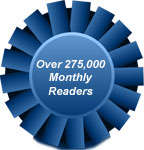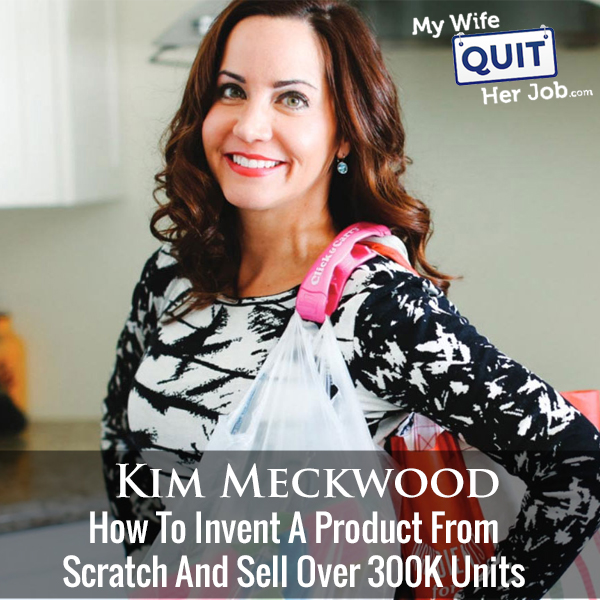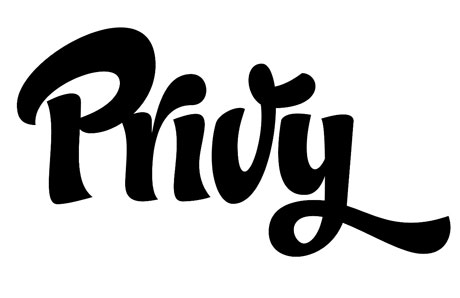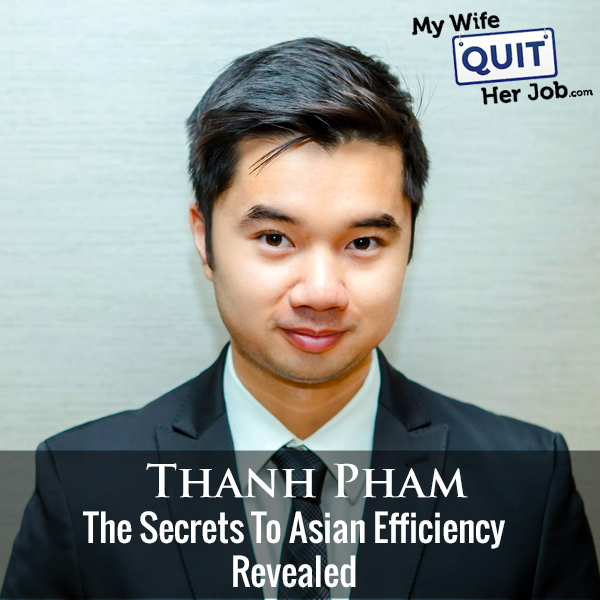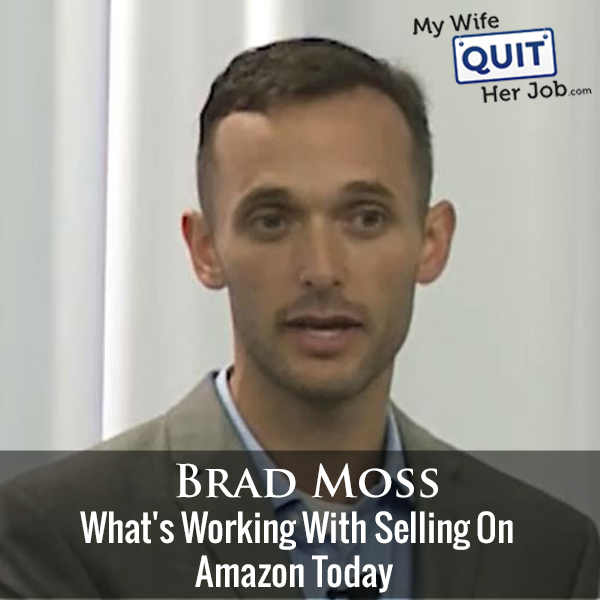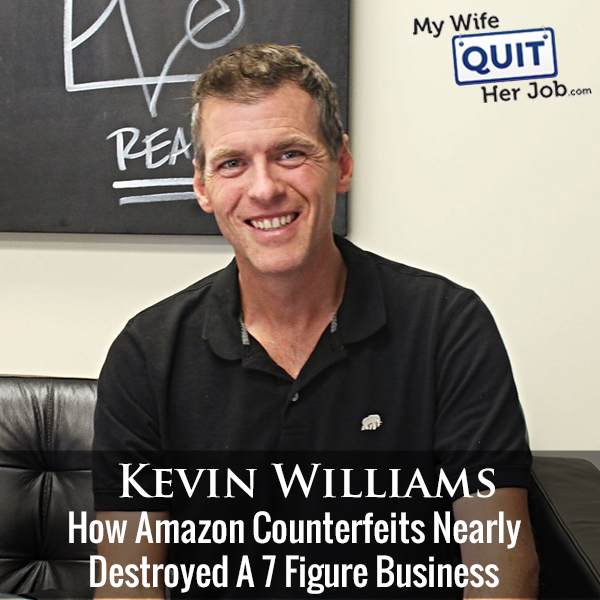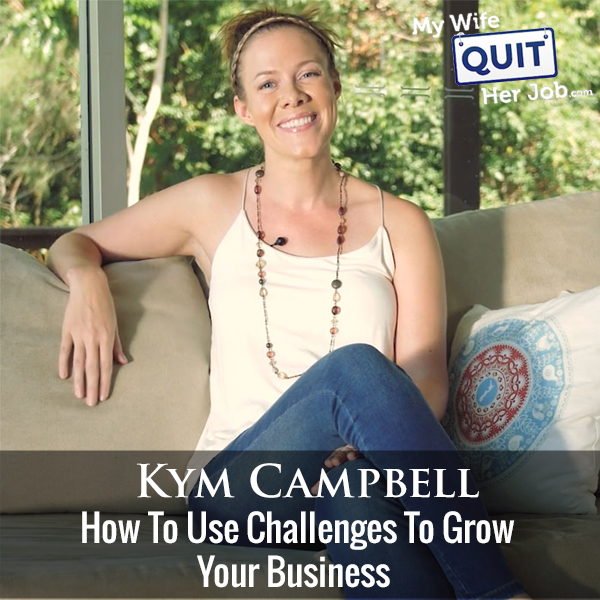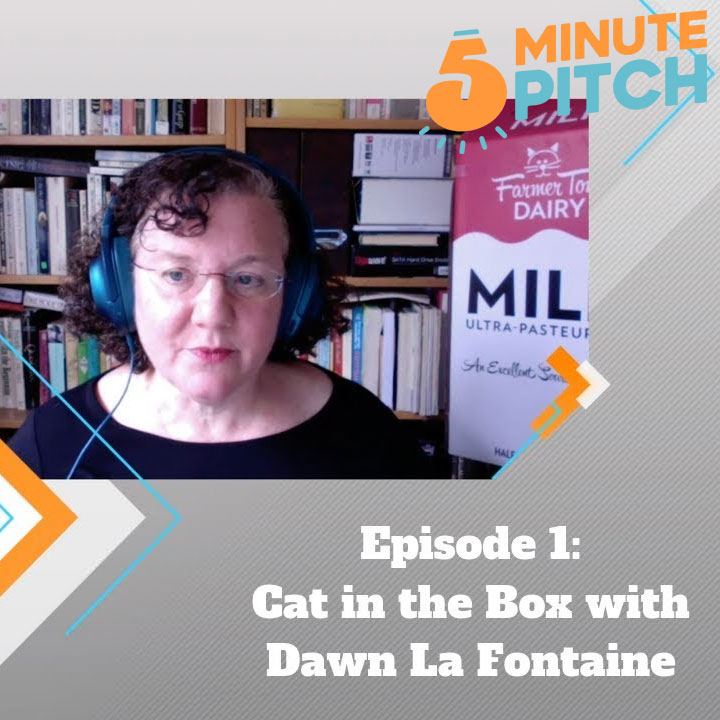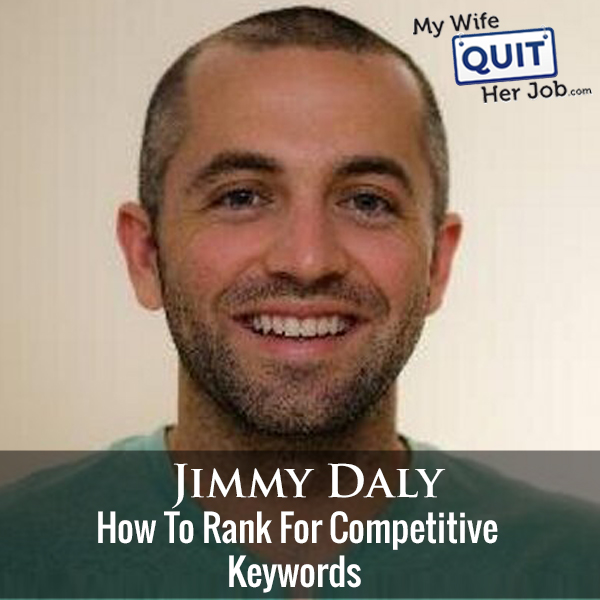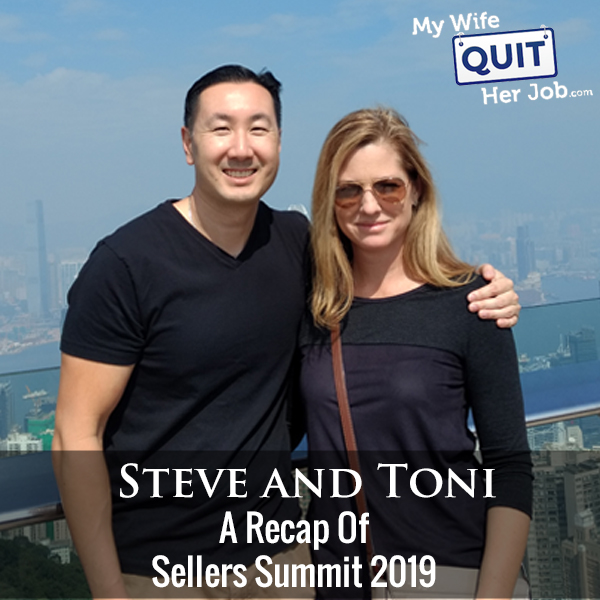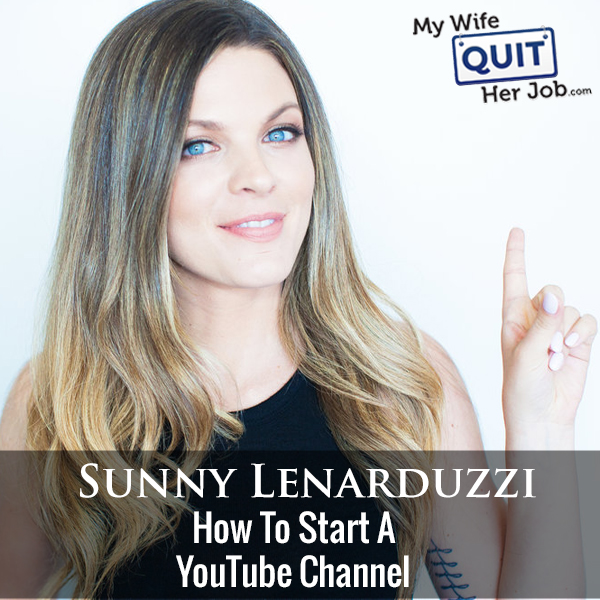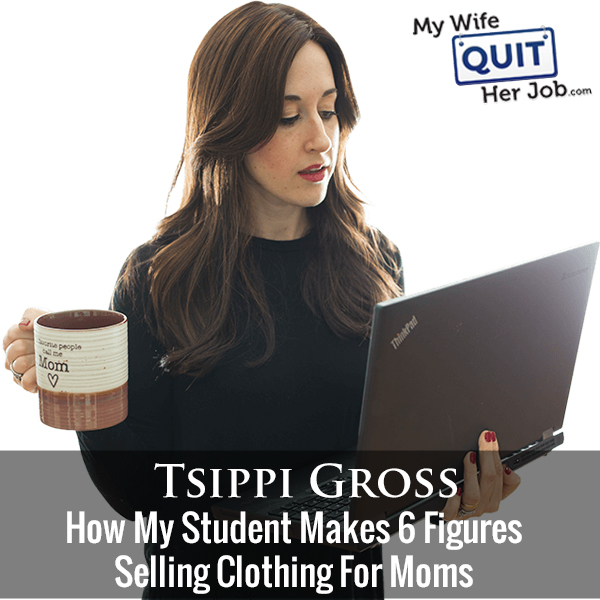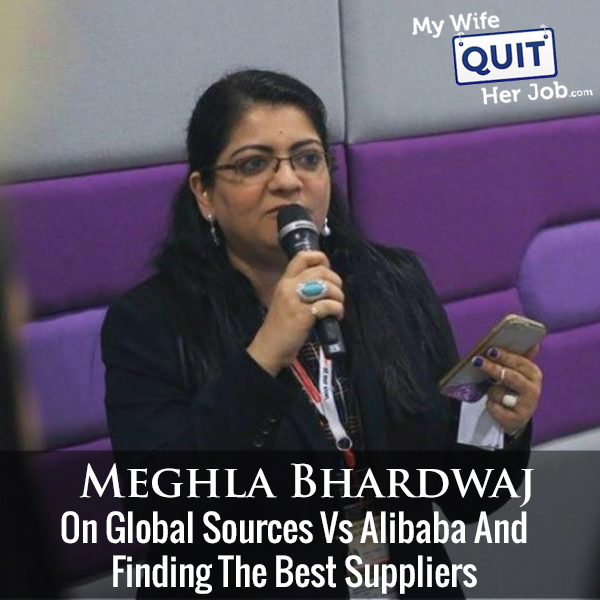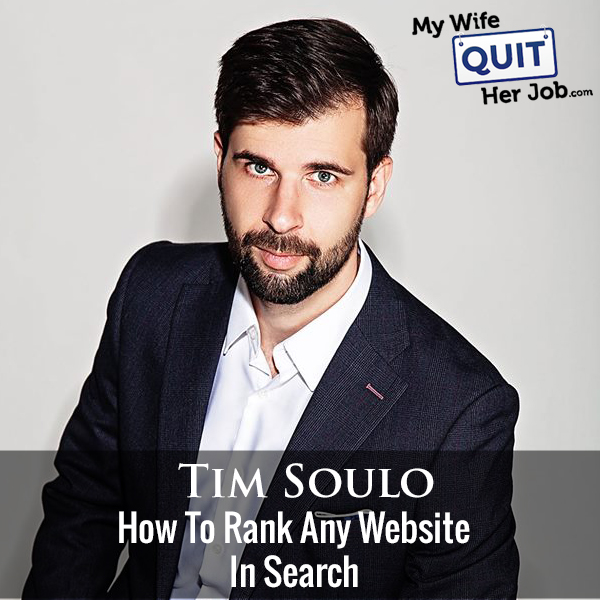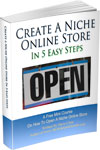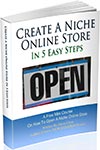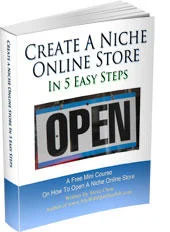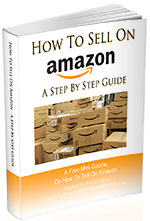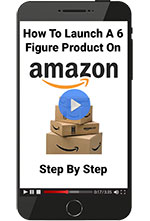Podcast: Download (Duration: 43:50 — 50.5MB)
Today I’m thrilled to have Kim Meckwood on the show. Kim was the winner of the 5 Minute Pitch, my Shark Tank like show with Mike Jackness, Greg Mercer and Scott Voelker where we gave away 50,000 in cold hard cash.
Kim invented an ingenious product called Click And Carry that has sold over 300K units. Click And Carry is a tool that allows you to comfortably carry a bunch of bags all at once and sling them over your shoulder.
In this episode, we’re going to talk about the triumphs and the struggles of entrepreneurship and how Kim got started with her business.
What You’ll Learn
- Kim’s motivations for starting her business
- How Kim validated her niche before she began
- How Kim designed and manufactured her product
- How Kim generates most of her sales and how to get on QVC
Other Resources And Books
Sponsors
Klaviyo.com – Klaviyo is the email marketing platform that I personally use for my ecommerce store. Created specifically for ecommerce, it is the best email marketing provider that I’ve used to date. Click here and try Klaviyo for FREE.
Privy.com – Privy is my tool of choice when it comes to gathering email subscribers for my ecommerce store. They offer easy to use email capture, exit intent, and website targeting tools that turn more visitors into email subscribers and buyers. With both free and paid versions, Privy fits into any budget. Click here and get 15% OFF towards your account.
Avalara.com – Handling sales tax is complicated. Fortunately, Avalara simplifies sales tax with real-time tax rate calculations and automatic return filing. And the best part is that Avalara already integrates with your existing accounting, e-commerce and marketplaces like Amazon, so it’s super easy to setup. Click here and get a FREE TRIAL.
SellersSummit.com – The ultimate ecommerce learning conference! Unlike other events that focus on inspirational stories and high level BS, the Sellers Summit is a curriculum based conference where you will leave with practical and actionable strategies specifically for an ecommerce business. Click here and get your ticket now before it sells out.
Transcript
And Kim is the founder of Click and Carry. The ingenious invention that allows you to carry an insane number of bags hands-free that she was also the winner of the five minute pitch. And today we are going to do a deep dive into her business and her story.
But before we begin, I want to give a shout-out to Privy who is a sponsor of the show. Privy is a tool that I use to build my email list for both my blog and my online store and right now I’m using Privy to display a cool Wheel of Fortune pop-up.
Basically, these are gives our email for a chance to win valuable prizes in our store and customers love the gamification aspect of this and when I implemented this form email signups increased by a hundred thirty one percent. Now, you can also use Privy to reduce cart abandonment with cart saver pop-ups and abandoned cart email sequences as well and one super low price that is much cheaper than using a full-blown email marketing solution.
So bottom line Privy allows me to turn visitors into email subscribers and recover lost sales. So head on over to privy.com/steve and try it for free. And if you decide you need some of the more advanced features use coupon code MWQHJ for 15% off. Once again, that’s P-R-I-V-Y.com/steve.
And I also want to give a shout-out to Klaviyo who’s also a sponsor of the show. Now whether you are getting your business off the ground or looking for new ways to scale Klaviyo offers fast simple and repeatable ways to grow and with Klaviyo, you can personalize your marketing build your customer relationships and automate your online sales and it is now easier than ever to create amazing email in advertising experiences. So I want to tell you about Klaviyo new entrepreneurs growth guide.
It is packed with must read blog posts case studies and getting started content. This guide helps you prioritize what to do next for maximum revenue growth. Now moving to any new marketing platform can be intimidating but Klaviyo helps you get up and growing fast with proven technology and countless support resources. Now you can explore this free content now, Over at K-L-A-V-I-Y-O.com/mywife. Once again, that’s K-L-A-V-I-Y-O.com/mywife. Now on to the show.
Intro: Welcome to the my My Wife Quit Her Job Podcast, we will teach you how to create a business that suits your lifestyle so you can spend more time with your family and focus on doing the things that you love. Here’s your host, Steve Chou.
Steve: Welcome to the My Wife Quit Her Job Podcast. Today, I’m thrilled to have Kim Meckwood on the show. Now, Kim was actually the winner of the five minute pitch my Shark Tank like show with MIke Jackness Gregg Mercer and Scott Walker where we gave away $50,000 in Cold Hard Cash to a single company. And that was Kim’s. Kim runs an e-commerce business selling Click and Carry, an ingenious tool that allows you to comfortably carry a bunch of bags all at once and sling them over your shoulder.
Now, it is truly an amazing invention that has sold over 300,000 units. Anyway, I’ve been looking forward to this interview now that the winter has finally been announced for 5 minute pitch. And what we’re going to do is we’re going to talk about the triumphs and the struggles of Entrepreneurship and how Kim got started with her business and with that welcome to show Kim. How are you doing today?
Kim: Hi Steve. Thanks so much for having me. I’m doing well, and I’m absolutely thrilled to be here and I’m really honored to be your winner on Five minute pitch. It’s huge for me. Thank you.
Steve: You know what’s funny about the five minute pitch, you know, we only saw each other virtually and then we finally got to meet in person at my event to seller Summit and it was awesome. It was great to see everyone in person.
Kim: I couldn’t agree more and I can’t believe how many great new friends. I have as a result of your five minute pitch. So thank you all around. I feel really lucky and it’s an honor to meet you.
Steve: Yeah, you know, it’s amazing how all the finalists got along really well and just started, you know, hitting it up. Basically.
Kim: Yeah, they’re pretty great. In fact, I actually have John’s product for my cat.
Steve: Oh, you purchased it already. Awesome.
Kim: Yeah, and I sent one to my mom to so, so prudence and Leila have a cheese.
Steve: Nice nice. So Kim, please tell the audience about your product what you sell and how you got started.
Kim: Sure. So I have a product it’s called Click and Carry and it’s just a simple handle device and it has two areas that allows you to put in as many bags as you can fit. Each side takes 40 pounds for a total of 80 and then you can secure them into place by rotating the top into place and then you either hold it in your hand with a comfy gel grip or even better you wear it over your shoulder and your hands-free.
It’s just very necessary for condo living or for moms who have to have a free hand for their baby or for people who just want to have a free hand to unlock their door.
Steve: I’ll post a picture of it in the show notes. So people can, sometimes you really have to see it in order to understand the product fully.
Kim: I agree and as you know, because you’re you were one of the few judges who actually had a Click and Carry, it’s one of those things where once you use it, you can never go back because it just really saves your arms and hands from getting the grooves from carrying so much weight.
Steve: Absolutely, so how did you get the idea for this? And yeah, how did you get started manufacturing? Did you start already knowing how to make stuff, or?
Kim: Okay, so this is such a bizarre story, but I have really vivid dreams and, in my dream,, appeared to Click and Carry but it was actually flat and it was a Jetsons ask dream where there are those flying cars and they zip in and zip down kind of like a helicopter. And in my dream, it was basically a line of those cars but one slot was missing.
So this car zipped in and zipped down and the Click and Carry was there it was in the form of an ex the cars zipped down it closed and then the train took off so I thought to myself. Oh, wow, that makes sense. That’s a way to secure things together, but you’ll still have room in the middle to put your hand. So I just modified it slightly. I made it a little bit rounded so it fits perfectly on one shoulder and then the product was born.
And the interesting thing is that I was talking about it for a while and I was sketching it. And at the time I was in medical device sales for Medtronic I used to work in Brain stimulation. So one of my clients she’s a neurologist at USC. She I guess was sick of hearing me talk about it. So she said you know Kim will you shut up and stop talking about it and do something about it. So I took her advice.
I actually met her neighbor who at the time was studying an entrepreneurial studies at the Pasadena design school. So I hired her neighbor to help me with the prototypes because the Pasadena design school had access to a 3D CAD printer so which was huge because at that time each CAD print was about $175, but if I had done it in just the real world it would have cost me probably a thousand each time.
I made a prototype. So with the help of this design student, I created the winner and once they had the winning clicking carry prototype, I sent it off and I made a mold in China.
Steve: How did you get in touch with a vendor who would make a mold for you?
Kim: That’s another weird story. Okay. So I live in a Condo building in Los Angeles and they call me the mayor here in my condo complex because I talked to everyone and just so happens that across the hall. There was this guy his name is Stewart and he worked for TIE and Tie’s the company that makes beanie babies.
So I told him all about my invention and what is trying to do and he put me in touch with his Factory that made the beanie babies. They were able to make a steel mold for me. And so I made the mold
Steve: Wait. Okay. So the Tie manufacturer you got in touch with them and they decided to make a mold for you?
Kim: Yes. Well, I mean, they also made steel molds. They didn’t just make Beanie Babies. They had, it was, it’s a really big Factory over there.
Steve: Okay.
Kim: But..
Steve: How much of the mold cost?
Kim: At that time, It was $5,000
Steve: That’s really cheap. Actually.
Kim: It is. But not when you’re bootstrapping. I mean for me at the time it was a lot of money, but the sad news is that I knew that it wasn’t going to work that it wasn’t going to be perfect. But I also knew there was a good chance I’d be able to modify my mold. So what happened is I received the first prototype back from the mold and initially, I’ll actually send you a picture of the original one.
Originally the slot where it turns it was just a straight line. So what would happen is when click into place, even though there was a male female parts prevent it from moving and dang stationary since it was just a single line. It was easy for the Click and Carrt to continue to move. So it just didn’t suit the purpose.
So I redesigned it and I made it kind of like a tooth and I’ll make sure that I get that to you so you can show your podcast viewers what it looks like but I changed the groove which also allowed me to modify my patent. So I ended up getting two patents from the same mold and now I finally had the winner. So that’s when I decided I did that I was going to take that revamped version and go and get a patent. So that’s just what I did.
Steve: So in terms of manufacturing the mold part, how much did it cost to redo the mold?
Kim: That was about $3,000 to modify the $5,000 molds. Luckily, It was using the same shape of the product. It just needed to be modified slightly so you could only take away from a mold. You can’t add to a mold.
Steve: Right.
Kim: So I was lucky in that sense that I was able to just take away a few things and modify it slightly. So ultimately the first mold cost me about 8,000 and my current mold cost about 25,000
Steve: And this mold is it’s in China?
Kim: it is in China. Yes.
Steve: Okay. And did you ever go visit there or was this all done remotely?
Kim: It was all done remotely and lucky for me the factory that I used to work with, they used to do a trade show in Orange County, California once a year, so I would meet them once a year here in the state.
And we would just talk to each other via internet. I should have gone but the interesting thing and sadly this is still the case in China if you’re a woman owner or inventor, you’re just not taken as a credible.
Steve: Mmm.
Kim: Inventor, in fact, many of the times when they were when they were in town meeting me. I would bring my nephew who I had working for me and my company and they would always ask questions to him, even though he wasn’t the owner or the inventor but he was a guy so
Steve: Right.
Kim: So I felt safe that they came here to meet with me. So it was a much safer way to go.
Steve: Okay. And so at this point you’ve spent $8,000 you have a new mold what happened next?
Kim: So I just started going around town and talking to local stores and I started sewing up farmers markets and I even did the Pasadena the Pasadena Rose Bowl, which is a swap meet that has I think 50,000 visitors once a month and I was just trying to get the word around and..
Steve: How many did you make in your first production run? I forgot
Kim: Probably about 5,000
Steve: 5,000 Okay.
Kim: Yeah.
Steve: And how much did it cost for that? First run, per piece?
Kim: Oh my gosh, they were really expensive and luckily I’ve turned things around but I think when I first started they were two dollars and nine cents a unit and then they ultimately went up to about two dollars and Seventeen cents a unit and that remember that’s not including importation taxes and getting it to the United States.
Steve: Mmm. So your landed cost was maybe around $3 or?
Kim: Pretty close. Yeah. It was it was pretty high. Luckily. I’ve modified the mold and made a new mold that and reduce cost but at the time that was what I had to work with and that was kind of a hard sell because it’s just a plastic piece of good. So people don’t want to pay a whole lot of money for it.
Steve: What was the selling price in the beginning?
Kim: It was $7.99 in the beginning.
Steve: Okay and two x mark yeah
Kim: Yeah. It was fine for me because I would you know, I was just bootstrapping it and just selling out of my out of my place. So I didn’t have to worry about getting margins for retailers and things like that.
Steve: So did they just fly off the shelves at the swap meets?
Kim: No, no. No.
Steve: Okay, I’ll let you continue.
Kim: They didn’t because it’s the kind of product that needs a demonstration and all of the sales that I made were made showing how it’s used or demonstrating it on a mannequin or actually physically showing the person they use. Once they actually had it in their grasp or over their shoulder, that’s when I would be able to sell them. But it was a one-on-one kind of thing. So.
Steve: Okay.
Kim: That’s when I really knew I had to really Branch out into the website thing.
Steve: Okay, and then so how did you start generating sales at the swap meets and that sort of thing weren’t working that well?
Kim: So then I started to get smart and I did research and I found out about a trade show in Chicago called the home and housewares show. And I knew it was a big risk. It was going to be very expensive. It probably cost me close to 10,000 to do it because I think..
Steve: So you bought a booth at the show?
Kim: I did there they have a section and this is great for young companies who want to get their product out there if it fits the genre. There’s an area called the inventors corner where you get a discounted Booth.
I think it was something like five or six thousand, but obviously that doesn’t include getting all your stuff there and you know having monitors to show videos and things like that, but the beauty of inventors corner is the fact that all of these bigger companies come in and try to find a young brand new company or brand new unique product and then they allow you to pitch your product to a panel.
When I pitched, the people on the panel were QVC, HSN, and SkyMall and companies like that. They were always looking for new products oh, Lakeland UK, which is a popular retailers in England. I was able to pitch to them. Unbeknownst to me, they really liked my product.
And the funny thing is I’ve gathered all of their cards and when I got home from the trade show, I followed up and I reached out to QVC. Bernadette of QVC didn’t call me back and didn’t call me back. I thought that was really strange. She seemed to like my product but then I got a call from the Bethenny Frankel show. Bethenny Frankel is the girl who sold this Skinny Girl Margarita franchise for I believe about a hundred million dollars.
Steve: Wow Okay.
Kim: I know, she’s a rock star. She makes margaritas and wine that they’re low-calorie and I think she’s well not I think, she’s one of the New York Housewives. At the time, she had a talk show and so I had applied for it months earlier because she would help a female entrepreneur once a week and a segment called Bethany, Bethany in your business, and I never received a call back.
But then, all of a sudden, out of the blue, I got a call from her people. And they asked if I would be interested in doing her show and I said, yes, of course because I knew I would get business advice from her. And again, she had just sold her company for something like a hundred million dollars. I knew I would get her business advice and perhaps a stipend.
I was expecting maybe five or ten thousand dollar stipend to help me in my business. And instead, I ended up getting a contract with QVC which was a Cinderella. It was crazy. It was such a Cinderella moment and it really it changed the trajectory of my business.
Steve: How does QVC work exactly? so they have a contract. Do you have to produce a certain amount of units?
Kim: You do. So it works in many ways. I was really lucky. They basically brought me in under their Sprouts program. So they really made it easy for me. Usually people have to pay for all of their inventory and they only get paid as they sell the product.
But because I was the Sprouts winner that year, I was the gadget of the year. Since I was the winner, they allowed me to have a guaranteed sale. So they initially ordered I think it was thirteen thousand six hundred units.
Steve: Oh wow Okay.
Kim: I know it was crazy. It was it was an interesting time because they made a lot of exceptions for me. Usually you have to have all those products in stock and I just didn’t and I had like maybe whatever the leftover what from my 5,000 units was. And they ordered 13,500. They filmed me. I filmed that Bethany episode in April.
That’s when they told me. They wanted to order the 13,000 units. I went on a month later, but the units weren’t ready. It takes about 3 months to create that many units at that time. It’s different now. And then like another month or so to get to the United States, so I filmed in May I sold out in 7 minutes.
And then customers were going to receive their products in August of that year. But the funny thing is I did so well that they added another five or 6,000 units too, to that initial order because I sold out.
Steve: So, did you have to front all that money for the production or did they help you with that?
Kim: No, I had a front all the money, which means I was out of that money from April until a month after it was delivered which was August 8th. So until September 8, I was I was out that money and then when they do send you the money they take away five percent because they count on returns. So.
Steve: What are the terms of the QVC deal? Like how much do they take? So you retail price before you said was $8.00, right?
Kim: Yes, yeah because I sold a set of four and they sold it for $25.
Steve: They sold 25 and how much of that do you get to keep and how much do they take?
Kim: I ended up keeping a little bit over five dollars a set. So was it wasn’t huge obviously. It was like well, let’s say about a dollar forty a unit is what I made. Okay. I didn’t really know what I was doing at the time. But it was it was still okay, it was fine, but it was a real success story in that right after that delivery. They ordered 60,000 more.
Steve: 60 thousand. Wow. Okay.
Kim: Yeah, so I had to figure out how to find the money to make the product. So that’s when I made a really big error because I didn’t really know how to go out there and pitch and find investors at that time and I had to learn these things kind of on the Fly and my Dada just passed away. So I wasn’t going to ask my mom for the money so what I did as I use my 401 k because you sometimes you have to strike while the iron is hot.
Steve: Sure.
Kim: Though I knew I was going to have a tax penalty. I thought I was going to be 20 or 30 percent but it ended up ultimately being about 50%. I know, on a bright note though. I didn’t get that tax penalty until about a year and a half later. So I was able to really function and build the business in the meantime.
Steve: So 60,000 units menu had to front like a hundred and twenty k or a little bit more than that?
Kim: Yeah, that’s exactly right.
Steve: Okay.
Kim: I think was like a hundred and thirty thousand and that wasn’t including shipping it to the US and oh one thing I forgot to mention about the initial order is you know, you have to keep your timelines if you’re working with QVC. You don’t want to set the wrong precedent. So my factory lagged a little bit and I actually had to fly the first order into the United States which cost me an additional 13 thousand which would normally have cost me like maybe 5,000 if I shipped it.
Steve: Right.
Kim: So.
Steve: So the money that you made from that first run of QVC, wasn’t that much was it like on the order of 20 grand then?
Kim: I don’t remember the exact amount and I should have had this prepared for you. But it was I want to say offhand I made, I don’t know, I didn’t want to discuss..
Steve: It was just far less than you needed to front the money. Right?
Kim: Far less. Yeah.
Steve: Okay far less. Okay.
Kim: Far less, yeah I was I was lucky I had the money in the 401K to be able to continue working with QVC cuz it and it was a great thing for a few years and I could I could go back and I eventually will but it was a really great thing.
Steve: So, okay. So you you borrow money to buy this production run for 60,000 units what happened after that?
Kim: So then I continued to go on until you go on until the units are sold. So I’ve I was on like seven or eight times on QVC. In fact, they even did a segment on me during breast cancer awareness month because I’m a Survivor. And they brought me on and they did a beautiful segment and I was able to tell people how you know, you have to believe in yourself and you know stick with your plan and try to get over adversity and do what you need to do.
So QVC’s been amazing to me and it’s been a really credible source, for example, when I go and I try to sell to other retailers when I say that I have been working with QVC for so many years they’re really impressed and they know that I have a quality product because it takes a lot to be proved as far as the quality of your product at QVC.
Steve: So there was a gap where you stopped selling all together, is that because that tax bill finally hit and then you for to produce anymore?
Kim: Yeah. It was a little bit of that in a little bit of, you know, I was to the point where I was just living off the proceeds from Click and Carry. That was great. But when you have these orders and that was at the same time getting orders from other places like Ralph’s which is a local grocery chain here in Los Angeles, you’re putting out all this money, but you still have to live and I was to the point where it was really hard for me to pay for my mortgage.
And more importantly for my health insurance because I was a cancer survivor. So I had to make the choice to go back to work. I kept Click and Carry alive and I continued to sell the whole time. But I had to go back to a daytime job just to just to make sure I was going to survive with Click and Carry.
Plus on QVC, I received 4.7 out of five stars. And that was after many many reviews hundreds of reviews. And the only negative comment, I would get on Click and Carry is the fact that it was difficult to open. So that’s when I realized that I needed to make a new version and I decided to back off a little bit on QVC to re-engineer my product and that’s when I met an amazing Mentor. His name is Mark and he invented the perfect push-up and he then taught me the ropes.
He taught me how to pitch to find an investor. He taught me how he used his Factory and how his Factory produced over 10 million versions of the perfect push up with very little error and he put me in touch with them. So then I switched factories and now I’m proud to say I’m with a new Factory. My new mold is significantly better in that, there’s very little error in the product that I produce and I’ve reduced cost and the amount of material going into each product by 81 cents a unit which is about a 37 decrease in cost. And that’s just it’s a game changer for me. It just it brought me to a new level and that’s, all thanks to mark.
Steve: This new mold. Was it significantly more expensive than the last mold?
Kim: It was, my new mold is 25,000.
Steve: Okay. So that was more in line with what I was expecting actually for the first round.
Kim: Yeah, that’s it was it was 25,000 and in the United States the same mold would be somewhere between sixty five thousand and eighty five thousand. And the per piece units were more expensive in the United States. I wish that weren’t the case because I’d prefer to make a US.
Steve: Sure.
Kim: Company, but unfortunately it was a lot less expensive for me to make my own mold in China and to produce there.
Steve: How did you get into Ralphs and those other stores?
Kim: All just knocking on doors, cold calling? I really used the clout that I had with QVC to get into these places. The same with the Container Store and Lakeland UK and then there’s a Japanese company called Essaouira Park. And it was all because you know, just being aggressive and getting out there and just doing your research or going on LinkedIn and finding out who the buyers are.
Steve: So what is it cold call look like? Like, pretend you were cold calling me.
Kim: Sure.
Steve: What would your script like?
Kim: So I have this cute little PowerPoint presentation and I had a printed out version as well and I told them about my success on QVC or I would play them my b-roll that I show on QVC. A b-roll is a, in my case. It’s a 53 second video that shows all the different uses of Click and Carry. I would show that to them I would tell them how the function.
Steve: Back up for a little bit. How did you get that first meeting did you cold call? Were you introduced by someone from QVC?
Kim: Glad you asked that question because I’ve missed that part right? I would send samples in the mail to them. I would find out who the buyers were. I would send a little care package. I would send pictures of the product in use. That’s how I would get my foot in the door. So many of those times people would call me or you know, email me and ask for more information.
Steve: In case you haven’t been following the latest e-commerce news most of the states in the US are now requiring you to collect sales tax. Even if you don’t have a physical presence in that state. As you can imagine, keeping track of every state sales tax rules can be a nightmare. Now, instead of pulling your hair out.
You should let a tool like Avalara take care of your sales tax headaches for you. Avalara simplifies sales tax with real-time tax calculations and automatic return filing and the best part is that Avalara are already integrates with your existing accounting e-commerce and marketplaces like Amazon, so it’s super simple to set up. So even if you have no idea how to get started with sales tax Avalara can help you get registered in a snap so you can focus on getting back to business.
Join over 20,000 businesses already automating sales tax compliance. Simply put Avalara is tax compliance done right. Find out more at avalara.com. That’s A -V-A-L-A-R-A.com. Now back to the show.
Okay, so they didn’t know you at all and you didn’t have any warm intros to these people. You just literally cold called them sent them a care package and then they reached out to you?
Kim: Yep. That’s right. In fact.
Steve: Amazing.
Kim: Yeah. In fact my buyer from Ralph’s. He’s one of my best friends to this day. He’s since retired from Ralph’s his name is Chris, but he and I probably talk once or twice a week. He’s in fact if I get to the point where I’m very successful, I’m bringing him on board for operations. He’s awesome.
Steve: It’s funny how these things work out, isn’t it?
Kim: It really is.
Steve: All right. So you have your pitch deck and I’ve seen this pitch deck obviously since you pitch this in five minute pitch. And is a very compelling pitch.
Kim: Thank you.
Steve: So I can see why after that you got into these stores. The one question in my mind is I imagine the margins are better than QVC for these retail shops. So how come the money from that wasn’t better than QVC?
Kim: Actually, no, I’m sorry. You’re not right. The margins are about the same and it’s because remember it at the time it was a $7.99 item or let’s say all the way up to $9.99. because that’s what the container store sells it for is $9.99. You have to give them a price so that they can make at least a 50% margin.
Steve: Right.
Kim: So it, I would say the average was about a dollar forty a unit as what I would make.
Steve: Okay.
Kim: Because it’s retail and I think I told you this because one of my issues with retail is that when people see it in retail, they’re not sure what it is. They don’t know if it’s a chip clip or if it’s one of those little gadgets that women hang their purse off the table with.
Steve: oh yes, yes.
Kim: So I actually need to revamp the way I work with retail and there’s this new idea now where there’s a mini screen that Loops a video and they could be charged with a UCB charger and they last for about six months and they continuously Loop a video. So people can actually see the product in action and see what it’s for, but I’ve actually pivoted and changed my strategy because of you and because of the other judges because you’ve opened my eyes and you’re absolutely right.
I was missing the boat in regard to selling online because the margins are significantly higher. I can make my money there and then I could afford to buy things like this little screen that would Loop a cute b-roll and show people the product in action on a show, at a store and actually relay the proper message. And so that’s what my concentration is right now online.
Steve: One thing I was curious about also is how did you come up with your pricing? Like was $7.99 kind of arbitrary?
Kim: It was kind of arbitrary and now I think $9.99 is probably the perfect price. In fact, I get a lot of feedback that perhaps it’s too low, but since it’s a brand new product It’s an Impulse buy. I think you have to kind of lower your cost to entry initially to get it out there. So I kind of think it might be a fair price at $9.99.
Steve: I was just kind of curious if you tested that at all because impulse buys for me are anything under 20 bucks like a no-brainer buy anything under 20 bucks.
Kim: Mmm-mmm
Steve: And I was just wondering what you could get away with. I don’t know. Just thought I just wonder if you do any testing on the pricing or if you got any feedback from people from QVC or the retail shops on your pricing.
Kim: No, I didn’t do any testing but see that’s that just goes to show why I am so lucky that I won the five minute pitch because that’s a great suggestion that you just gave me and that’s something I will Implement. Because I didn’t do any testing and the beauty is then now I’m concentrating online. It would be easier to test their and fast.
Steve: Absolutely.
Kim: Yep, and I’m currently testing a single unit on Amazon Prime at $11.99 and then a set of two for $19.99. So it’s incentive obviously for people to buy two. But I’m so I am selling units at $11.99.
Steve: Yeah, absolutely. I mean, I think there’s room for to go up. I don’t want to just preemptively say that but it seems to me that you could get away with higher pricing.
Kim: Thank you.
Steve: So let’s switch gears a little bit. So a lot of the listeners of this podcast are people who want to start a business and follow down your path. And so I wanted to get your perspective on some of the more difficult Parts about getting your business off its feet and what you did about it. What would you say was your greatest challenge?
Kim: Well, my current greatest challenge is showing people what it is because it’s basically changing the way people shop for groceries. My biggest challenge right now is getting the word out and product awareness.
Steve: What about in the very beginning when you first got started? Actually one question, I forgot to ask you is did. You know that this was going to sell when you started making it like did you have any initial orders before you create the mold and invested all that money?
Kim: No, I just knew in my heart and I know in my heart that this is going to be everywhere. It’s going to be like an umbrella and I know that sounds like a conceited thing to say, but I know I feel like that dream that was a gift from God. Like it was this is something that’s going to make people’s lives easier. Even if it’s just a little bit easier, especially people who don’t have cars or in third world countries who have to carry heavy things. It’s going to make lives easier. I just know it’s going to be out there everywhere. One day it’s just the challenge is getting to that point with a shoestring budget.
Steve: Sure. Absolutely actually. My next question was how much did you invest it sounded like $5,000 to get started with this?
Kim: Yeah. No, it’s way way way more I would say today, I’ve probably because I put a lot of my my proceeds back into it because it takes money to make money, you know, making marketing pieces packaging promotions. I probably put about a quarter of a million dollars into this business and much of it was the patents. And the multiple molds and shipping and production there. There’s a lot to it keeping up licenses every year.
Steve: I meant like to get your initial first couple of units for sale. So you spent 5,000 for the mold and maybe an additional production of 5,000 units, right?
Kim: Yeah.
Steve: So we’re looking at like 15 grand or so.
Kim: Yeah, that would be about right.
Steve: Hey, I know you’ve invested obviously a lot more over the lifetime of the product but also produced a lot of things as well.
Kim: Yeah, I have yeah, but yeah initially, yeah, I would say 10 to 15,000 like I did it as inexpensively as I could.
Steve: Then so once you had produced your product, I’m just trying to get an idea. So the swap meets was your initial strategy and then what kept you going? I mean when things weren’t going well.
Kim: Just that believe I just for example, when I had to go back to work because I didn’t want to lose my condo. Like I mean, I had already lost my 401k the anxiety level if I lost my condo on top of that I wouldn’t be able to handle it and I would be homeless.
So I just I knew that I had to step back for a little bit and be conservative but I kept the dream alive and I would work nights and weekends. Wake up super early mornings to keep the dream alive and it’s just something I know in my heart that has to be out there and I’m not going to stop until it is. I am not gonna stop until I can do just Click and Carry again because there was nothing more exciting than to wake up and to be creative and to work on your own dream.
It’s in fact, my days would be 12-15 hour days because I loved what I was doing and that’s what I would I would push to every entrepreneur out there who has something and has something that they believe is special, believe in it. Don’t listen to the naysayers. Just keep moving forward because if you believe in it, there’s a reason and I really, I believe there’s a reason and I’m going to get this out there if it kills me.
Steve: In terms of your initial motivations for starting this, it wasn’t because you didn’t like your job or anything right? It’s just because you had a dream one night and then this you just knew that you had to bring this product to the market?
Kim: Yeah, actually, let me go back and tell you, I did love my job. I loved it. It was amazing and fulfilling. But when I first started talking about it when I first had the dream, I was in pharmaceutical sales, and I was selling this drug for Parkinson’s that was just a slight modification to the gold standard. It’s called was called Percopa, which is the staple of a Parkinson’s drug regimen is called Cinema or Cardio Levodopa.
The company I worked for put this product on the market as of a kind of like a Band-Aid because they were going to be launching a new product once it was FDA approved. And the FDA approval kept getting delayed and delayed and delayed.
So initially when I first met the doctor Jennifer who helped me to find my help me with the cad design. I had really nothing to talk to any of the doctors about because it was a slight modification on the gold standard said that’s when I would talk to them about my ideas and inventions and we talk about life, but then I end up getting a job with Medtronic and deep brain stimulation.
So it was a very serious job and it was a very exciting job, but what happened is a couple of years later, I was there for about five or six years. A couple of years later I ended up getting breast cancer. That was a really scary time and luckily everything’s fine. I’m cancer-free. But when you go through something like that life event like that you realize how short life is and even though I made it a ton of money. I didn’t really have any free time. I realized what really made me happy was working on Click and Carry.
So I ended up getting breast cancer in February of that year the completed all my surgeries by the end of March of that year and I decided right then and there I was going to quit my job. So I saved up all my money till the end of the year and then I just did something crazy and starting in the new year. I started Click and Carry and it was never so exciting as those three years where I just did Click and Carry. And didn’t have a day job and I can’t wait to get back to that place and I’m going to get there soon.
Steve: Okay, So last question for you Kim if you were to start all over. Again, and I never you’ve made your share of mistakes and whatnot. What would you do differently today if you were to start all over again?
Kim: Gosh, well, so there’s so many different tools now available to people and online sales have really blown up. Instagram, Facebook, YouTube, they’ve all blown up. I would use those vehicles to get the word out and the awareness out versus starting in retail, which I enjoyed.
Those something that you pointed out to me and you were absolutely right. I started with the hard part first. The good news is now I know the Beast that is retail, and I know how to be successful in retail, but I could have made this a lot easier on myself by starting out selling online or starting on Amazon and that’s something that people now have the luxury to do.
Steve: Would you go back to that trade show again or?
Kim: yes, I would I wouldn’t be allowed to go back into inventors corner, but though I would obviously have to be more successful in order to go back. Because the booths on the regular stage are a lot more expensive than and inventors corner. But that Is just the end-all be-all for products like my product. It’s the home and housewares show is a magical event that really introduces you to a lot of people around the world.
Steve: You know, one thing I actually forgot to ask you to just popped into my mind. Was that worth getting was it a hassle and has it protected you in any way?
Kim: I wouldn’t say it was a hassle because I did it the right way in that. I actually hired an attorney was very expensive. I actually have two attorneys. I have an attorney for my patents and one for my trademark, but it was the best thing I could have ever done because it gives me the confidence to know that I’m protected at least in the United States.
If someone were to infringe on my patent, I am very safe. I’m I have two utility patents on Click and Carry, but even better the United States patent and trademark office did a story about me. They have a publication called it’s called, Inventor’s Eye and they put me in a segment called Spark of Genius. So if someone were to try to infringe on my patent, I’m not only do I have a United States Utility Patent, but I’m also in their publication so I’m extra protected.
Steve: So just curious have there been any copycats that you’ve experienced at all?
Kim: There have been 16 products since 1962 to carry groceries. But the reason I was awarded a Utility Patent is because mine is the only one that can be worn over the shoulders as well as carried in the hands.
Steve: I see.
Kim: But there’s a new product. It’s called grocery grips and it’s just a strap that you kind of Sling over your shoulder kind of like a hobo strap and in a way, I think they’re infringing on my patent to a small extent but it’s not truly hands-free.
So I haven’t filed any paperwork, but they’re trying to say it’s hands-free when in actuality. It’s not necessarily hands-free because you can’t you have to hold it with your hand down one side and it doesn’t evenly balanced though, the weight so it defeats the purpose.
Steve: So Kim moving forward, it seems like you’ve had a lot of hardships and you recovered from them and you’ve won $50,000 from five minute pitch. What are your future plans in the near future?
Kim: So my future plans are number one, I’m going to get the mentorship from the four of you. I am so thrilled about that. Because one thing I won’t do is waste money in the wrong direction. So I’m going to hopefully with your help take that money and I’m going to produce many ads for Instagram for Facebook for YouTube. I’m going to reach out to influencers who are let’s say Mom bloggers do-it-yourselfers for the construction industry. I’m going to use my money wisely. I’m going to do that because I’ll be educated by all of you.
Steve: Awesome. Well Kim where can people find you online and get a video demonstration of your product?
Kim: So if they go to clickandcarry.com, it’s C-L-I-C-K-A-N-D-C-A-R-R-Y.com, you can see quick video that shows how the product is used. It’s the b-roll that I use on QVC and it’s also available on Amazon Prime and the videos also there.
Steve: Awesome Kim. Well, you know what I like about you a lot? And this is what made you stand out in the competition is that you’ve went through all these hardships, but you didn’t give up and you’re in a really good position now to kick major butt.
Kim: Thank you. I can’t wait to get out there and kick major butt and I know I’m going to be able to do that. Thanks to you. So thank you for picking me.
Steve: And Kim, Thanks a lot for coming on the show.
Kim: It’s an honor. Thank you.
Steve: Take care.
Hope you enjoyed that episode. Now, I just love Kim’s spirit, her work ethic and the fact that she’s not willing to give up no matter what the circumstances. And with an extra 50k and our mentorship, I know that she’s going to be successful. For more information about this episode go to mywifequitherjob.com/episode266.
And once again, I want to thank Kaviyo for sponsoring this episode, Kaviyo is my email marketing platform of choice for e-commerce Merchants. You can easily put together automated flows like an abandoned cart sequence a post purchase flow or win back campaign. Basically, all these sequences that will make you money on autopilot. So head on over to mywifequitherjob.com/klaviyo. Once again, That’s mywifequitherjob.com/klaviyo.
I also want to thank Privy for sponsoring this episode. Privy is the email capture provider that I personally use the term visitors into email subscribers. They offer email capture exit intent and site targeting tools to make it super simple as well. And I like Privy because it is so powerful and you can basically trigger custom pop-ups for any parameter that is closely tied your eCommerce store. Now, if you want to give it a try it is free so head on over to privy.com/steve. Once again, that’s P-R-I-V-Y.com/steve.
Now I talked about how I use these tools in my blog and if you’re interested in starting your own e-commerce store heading over to mywifequitherjob.com and sign up for my free six day mini-course just type in your email and I’ll send you the course right away. Thanks for listening.
Outro: Thanks for listening to the My Wife Quit Her Job Podcast where we are giving the courage people need to start their own online business. For more information visit Steve’s blog at www.mywifequitherjob.com
I Need Your Help
If you enjoyed listening to this podcast, then please support me with a review on Apple Podcasts. It's easy and takes 1 minute! Just click here to head to Apple Podcasts and leave an honest rating and review of the podcast. Every review helps!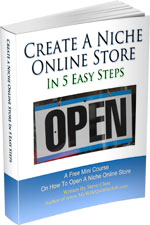
Ready To Get Serious About Starting An Online Business?
If you are really considering starting your own online business, then you have to check out my free mini course on How To Create A Niche Online Store In 5 Easy Steps.
In this 6 day mini course, I reveal the steps that my wife and I took to earn 100 thousand dollars in the span of just a year. Best of all, it's absolutely free!

